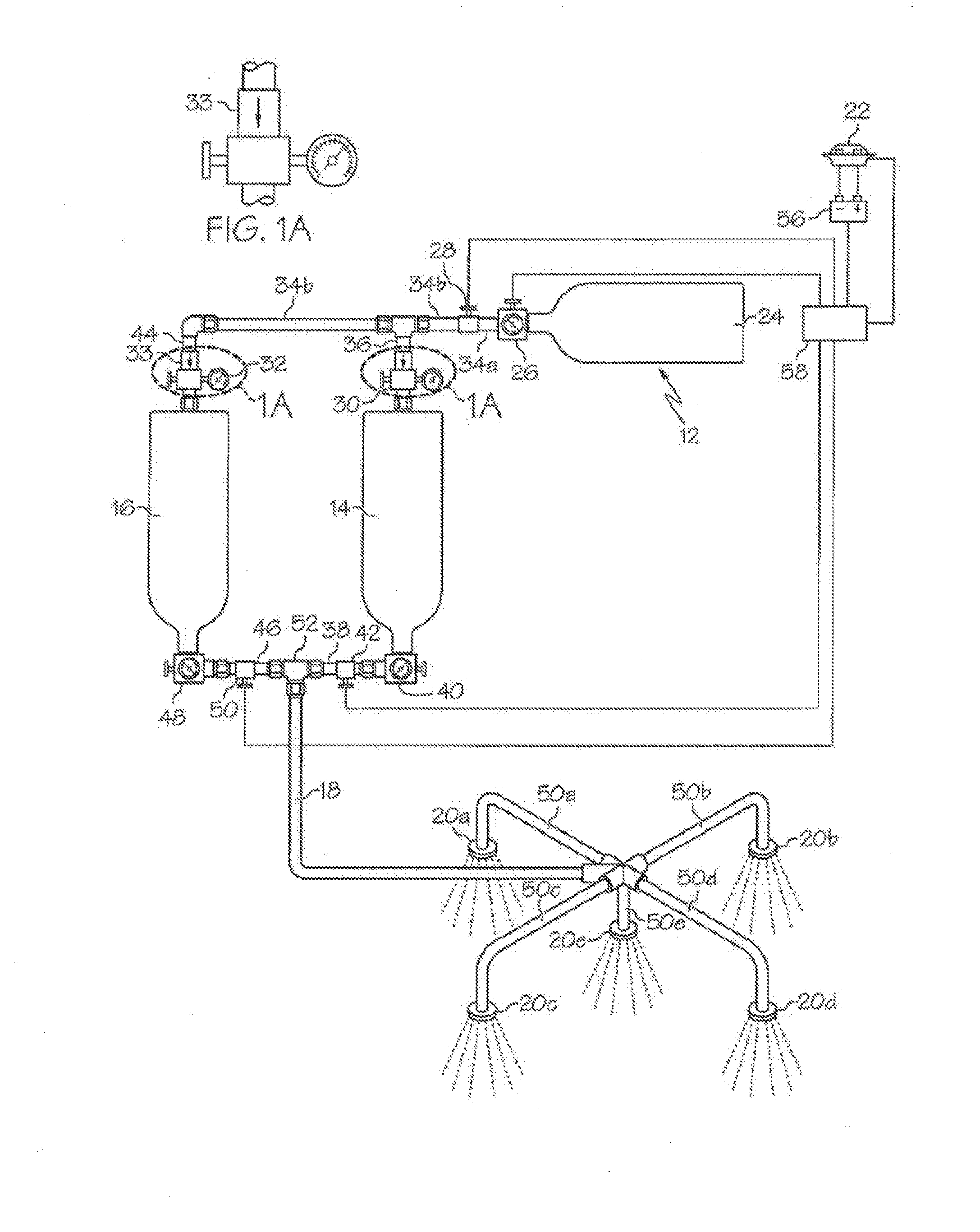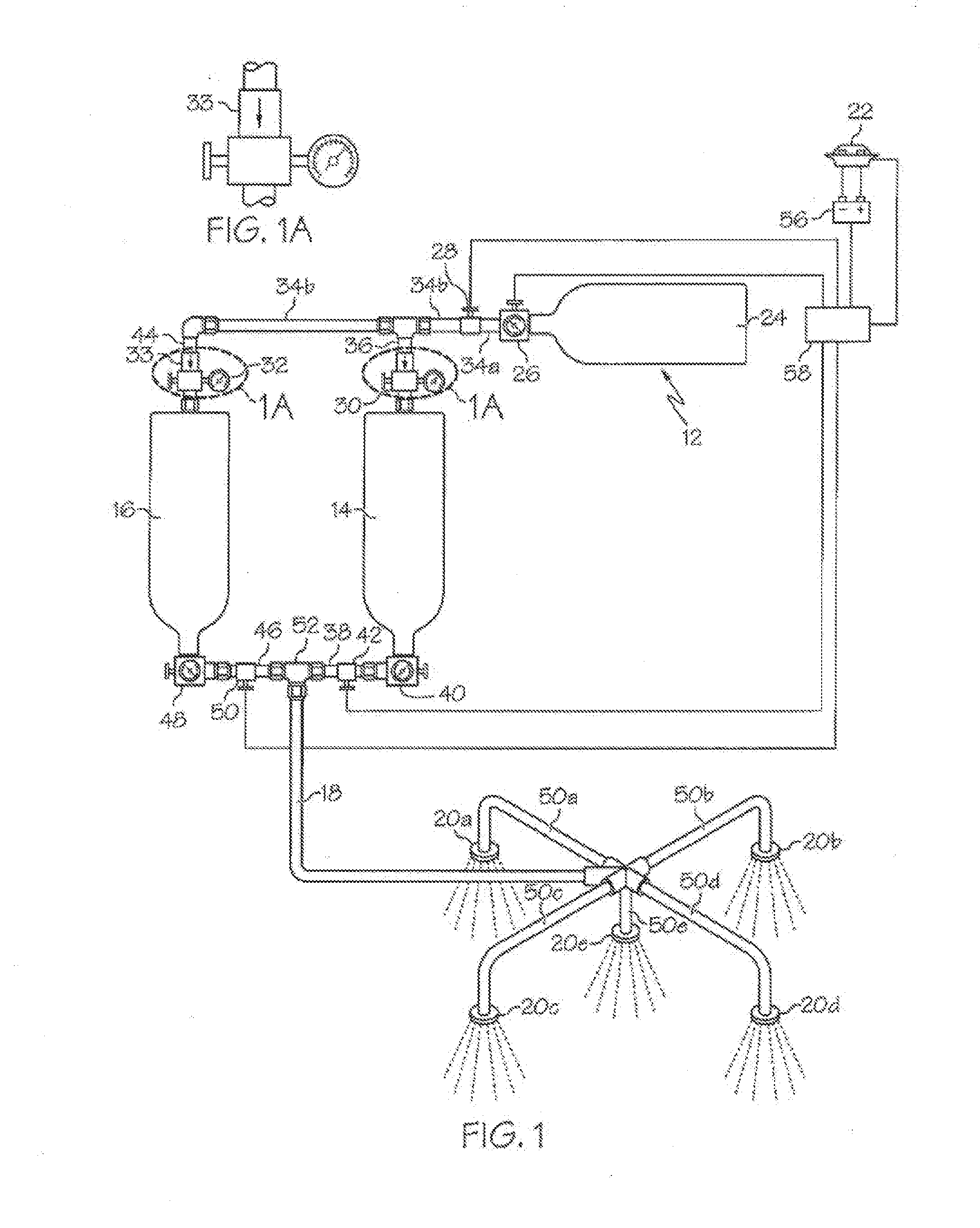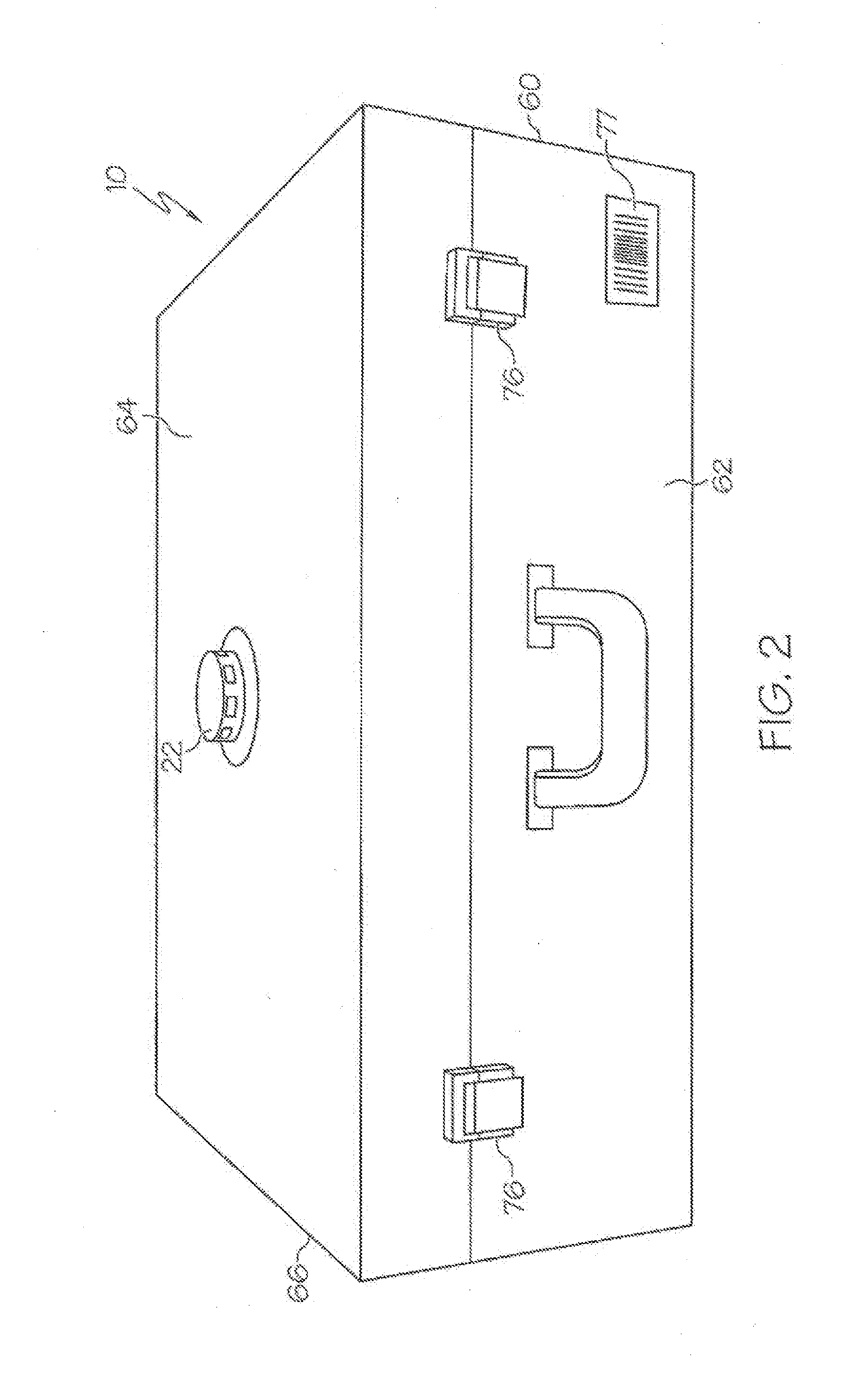Fire suppression system
a fire suppression and system technology, applied in fire rescue, spray nozzles, spraying apparatus, etc., can solve the problems of short protection time, insufficient oxygen deprivation and suffocation, and too strong fires, so as to prevent or lessen the possibility of sudden eruption
- Summary
- Abstract
- Description
- Claims
- Application Information
AI Technical Summary
Benefits of technology
Problems solved by technology
Method used
Image
Examples
Embodiment Construction
[0037]The following description of the invention illustrates specific embodiments in which the invention can be practiced. The embodiments are intended to describe aspects of the invention in sufficient detail to enable those skilled in the art to practice the invention. Other embodiments can be utilized and changes can be made without departing from the scope of the present invention.
[0038]The present invention is directed to a fire suppression system 10 used to disperse a two part fire retarding foam chemical agent. Fire suppression system 10 of the present invention comprises a pressure source 12, a first component tank 14, a second component tank 16, a mixing tube 18, at least one nozzle 20, and a heat / smoke sensor 22. FIG. 1 illustrates an embodiment of the present invention wherein pressure source 12 comprises a compressed gas tank 24. Compressed gas tank 24 includes a volume of gas under pressure so as to be a propellant for the components of tanks 14 and 16. Compressed gas t...
PUM
 Login to View More
Login to View More Abstract
Description
Claims
Application Information
 Login to View More
Login to View More - R&D
- Intellectual Property
- Life Sciences
- Materials
- Tech Scout
- Unparalleled Data Quality
- Higher Quality Content
- 60% Fewer Hallucinations
Browse by: Latest US Patents, China's latest patents, Technical Efficacy Thesaurus, Application Domain, Technology Topic, Popular Technical Reports.
© 2025 PatSnap. All rights reserved.Legal|Privacy policy|Modern Slavery Act Transparency Statement|Sitemap|About US| Contact US: help@patsnap.com



